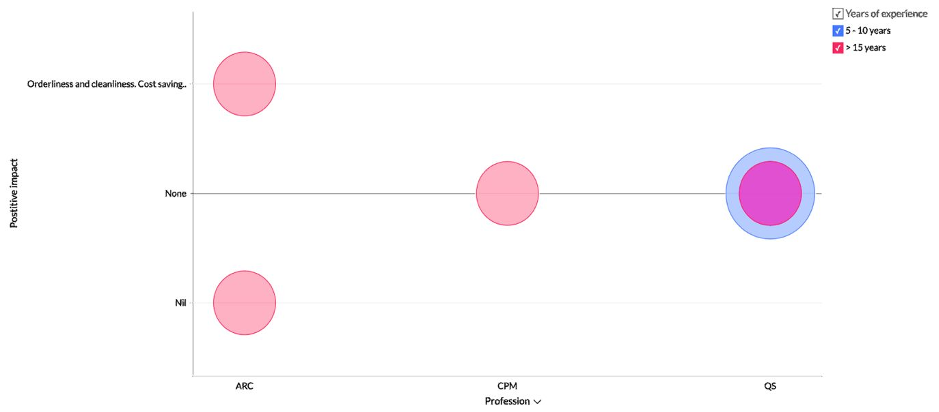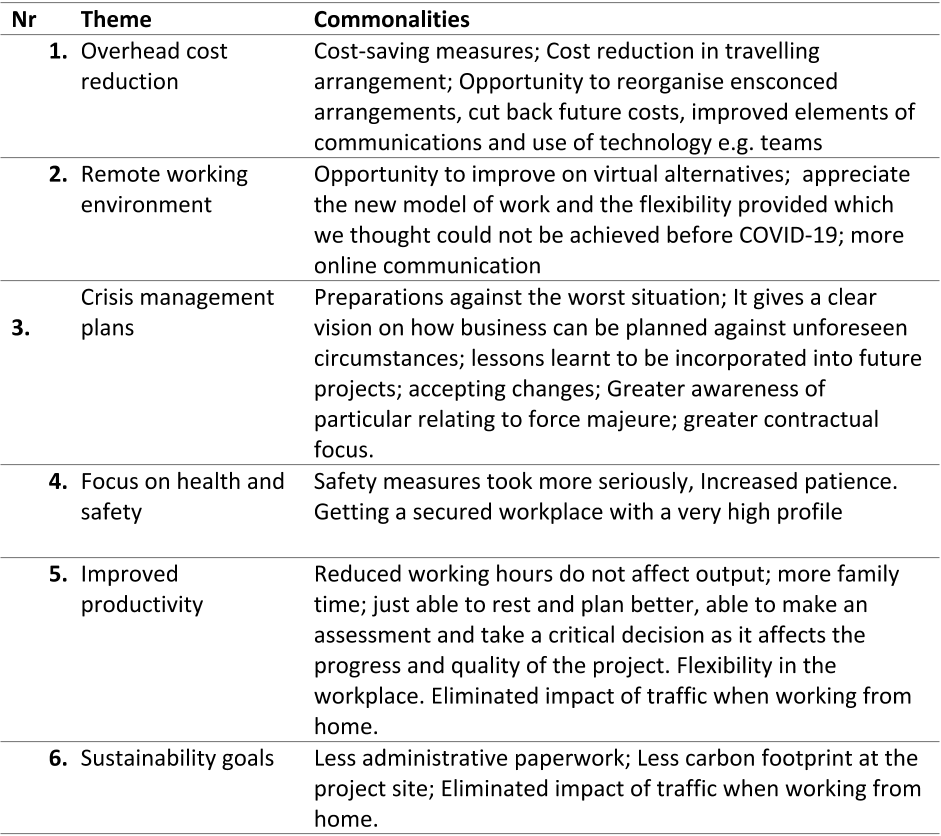




Did you find this useful? Give us your feedback

















13 citations
12 citations
10 citations
9 citations
8 citations
602 citations
200 citations
175 citations
166 citations
126 citations
The following headings are areas of future research. Considering the enormity of influence COVID-19 have had on the global construction industry, there is a need to further study the impact of COVID-19 on the construction industry. The abovementioned research areas may be studied from a micro-perspective of national, geographical, organisational, project, economic, social and technological inclinations.
Positive impacts of COVID 19 in construction industry were virtual alternatives, lower interest rate while negative impacts were site delays, cash flow issues, skill shortages, project suspensions amongst others.
Other lessons learned for the future of the construction industry were aimed at improving the management of COVID -19 risk at work; improved supply chain relationships and responsibility; workers engagement; efficient site induction processes; increase in remote meetings using communication technologies.
Remote working environment Opportunities to work from home as a new flexible work-from-home model in the construction industry had been identified as a benefit of the construction from the qualitative analysis.
BE1 from the United Kingdom identified “…Distrupted socialisation, job loss and redundancy…”, as the major negative impacts COVID-19 had on the construction industry.
The negative impacts of COVID-19 on the construction industry largely stem from the UK Governments ‘Construction 2025 report’, two-thirds of construction contracting firms are not innovative and consequently freezing technological progress within the sector.
Improved productivity may also result from flexibility in the workplace as noted by African and Australian respondents who were able to return to work at their convenience when the epidemic situation was better.
60.5% of the participants hold Master of Science (MSc) degrees, 31.6% have first degrees, 7.5 % have a higher education or college degree and the remaining population, 0.4% have Ph.Ds.
construction output declined during the pandemic because the global construction industry experienced a shortage of construction materials, and material delivery delays (Alsharef et al., 2021).
Improved productivity was identified by Pirzadeh and Lingard (2021) as a key benefit of working flexibly in-office setting or at home.
When employees of the construction industry work from home, all overhead costs associated with office-related activities such as printing, electricity, waste and water usage are eliminated.
The implications of the lessons learned for construction project management; construction occupational health and safety; supply chain management; and virtual working environments; all necessitate advanced in construction information technology and research.
A recommended limit of working hours can be designed for virtual environments because it is likely construction professionals may want to finish a weeks’ work in a day.